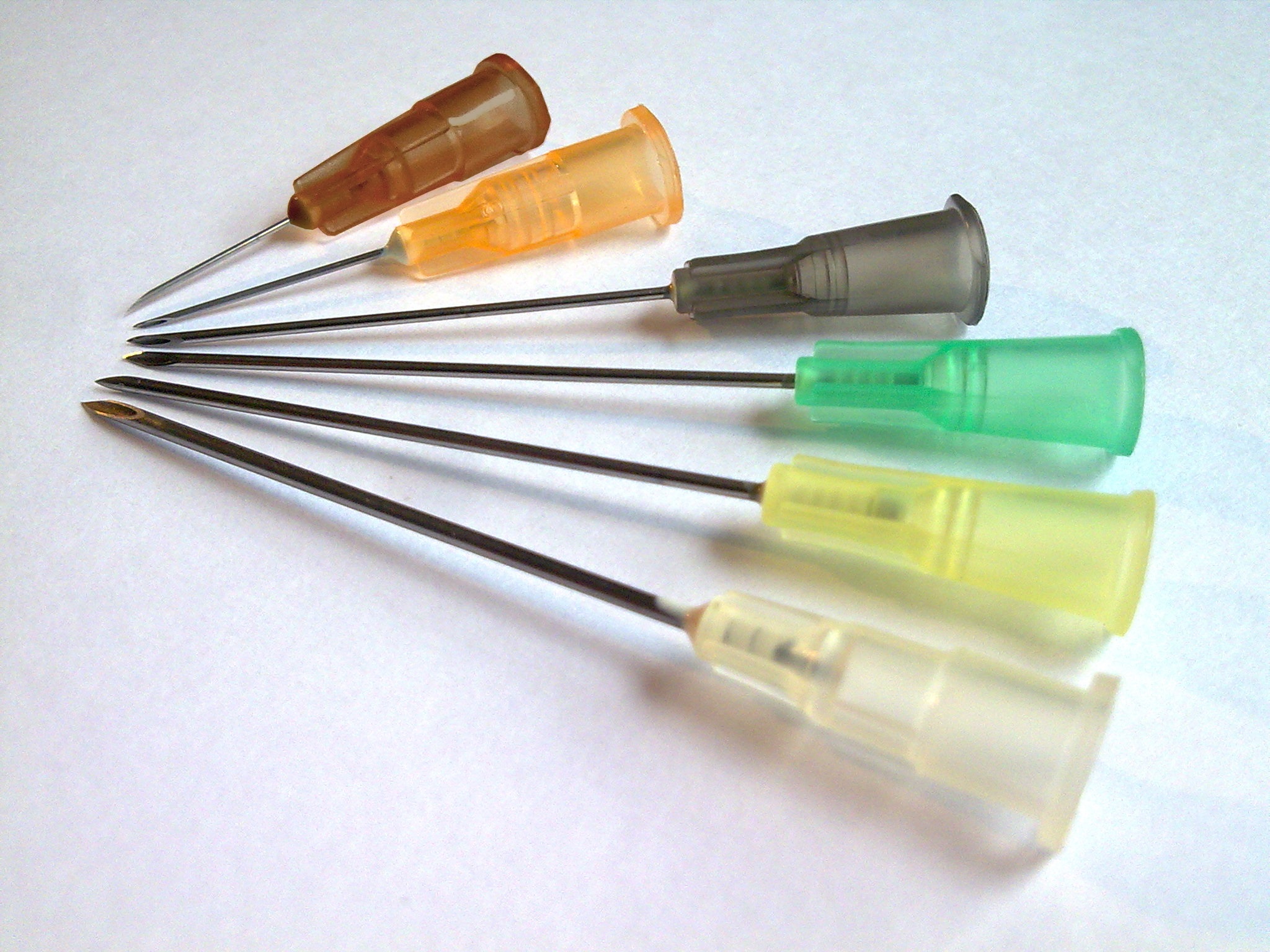Birmingham gauge on:
[Wikipedia]
[Google]
[Amazon]
The Birmingham gauge, officially the Birmingham Wire Gauge and often abbreviated as ''G'' or ''ga'', is unit or
 Rapid blood transfusion through 23G or smaller needles can cause
Rapid blood transfusion through 23G or smaller needles can cause
Sheet Metal Gauge Size Data – Engineers Edge
Wire gauges Standards of the United Kingdom
wire gauge
Wire gauge is a measurement of wire diameter. This determines the amount of electric current the wire can safely carry, as well as its electrical resistance and weight.
Types of wire gauge
Wire gauges may be broadly divided into two groups, t ...
used to measure the thickness or diameter of wires and tubing, including hypodermic needles and other medical tube products.
Terminology
The Birmingham gauge is also known as the Stubs Iron Wire Gauge or Birmingham Wire Gauge and is distinct from the Stubs Steel Wire Gauge and the British Standard Wire Gauge. It is commonly referred to simply as ''gauge'' (abbreviated as ''G''), but this should not be confused with the French gauge, a separate system used for measuring the outer diameter of catheters.System
The Birmingham gauge ranges from 5/0 or 00000, the lowest gauge number corresponding to the largest size of , to 36, the highest gauge number corresponding to the smallest size of . The increments between gauge sizes are not linear and vary. At higher gauge numbers, the increment between the two highest gauges is , while at lower gauge numbers, the increment between the two lowest gauges is . This progression does not follow a mathematical formula but instead reflects historical manufacturing practices in the wire drawing industry, where the size increments were determined by practical tooling, such as a draw plate, and production constraints. In applications involving wires and fine tubing, the gauge number refers to the product's outside diameter. For larger mechanical tubing, however, the gauge number indicates the wall thickness, independent of the tube's overall size. In medicine, the Birmingham gauge is widely used to specify the outer diameter of hypodermic needles, catheters, cannulae, and suture wires. However, catheters are more commonly defined using the French catheter gauge. The Birmingham gauge was originally developed in early 19th-century England for wire manufacturing and became common in medical settings in the early 20th century. The Birmingham gauge system is also recognized in international medical standards, such as ISO 6009:2016, which includes a color-coding system for hypodermic needles. This standardization helps ensure accurate identification and compatibility of medical equipment.Sizes of hypodermic needles
Hypodermic needles are available in a wide variety of outer diameters described by gauge numbers. Smaller gauge numbers indicate larger outer diameters. Inner diameter depends on both gauge and wall thickness. The following chart shows nominal inner diameter and wall thickness for regular-wall needles. Thin-wall needles (not shown) have identical outer diameters but larger inner diameters for a given gauge. Rapid blood transfusion through 23G or smaller needles can cause
Rapid blood transfusion through 23G or smaller needles can cause hemolysis
Hemolysis or haemolysis (), also known by #Nomenclature, several other names, is the rupturing (lysis) of red blood cells (erythrocytes) and the release of their contents (cytoplasm) into surrounding fluid (e.g. blood plasma). Hemolysis may ...
(rupturing of red blood cells).
Sizes of catheters
This includesperipheral venous catheter
In medicine, a peripheral venous catheter, peripheral venous line, peripheral venous access catheter, or peripheral intravenous catheter, is a catheter (small, flexible tube) placed into a peripheral vein for venous access to administer int ...
s. The gauge compared to outer diameter is the same as for needles, but the color coding is different.
See also
*Wire gauge
Wire gauge is a measurement of wire diameter. This determines the amount of electric current the wire can safely carry, as well as its electrical resistance and weight.
Types of wire gauge
Wire gauges may be broadly divided into two groups, t ...
, including other systems
* French gauge, mainly for catheters
* American Wire Gauge
References
Further reading
* ISO 9626: Stainless steel needle tubing for the manufacture of medical devices, 1st ed. Geneva: International Organization for Standardization, 1991: 1–2. * ISO 9626: Stainless steel needle tubing for the manufacture of medical devices, Amendment 1. Geneva: International Organization for Standardization, 2001: 1–2. *External links
*{{cite journal , doi=10.1016/0736-4679(87)90009-6 , author=Iserson KV , title=The origins of the gauge system for medical equipment , journal=J Emerg Med , volume=5 , issue=1 , pages=45–8 , year=1987 , pmid=3295010Sheet Metal Gauge Size Data – Engineers Edge
Wire gauges Standards of the United Kingdom